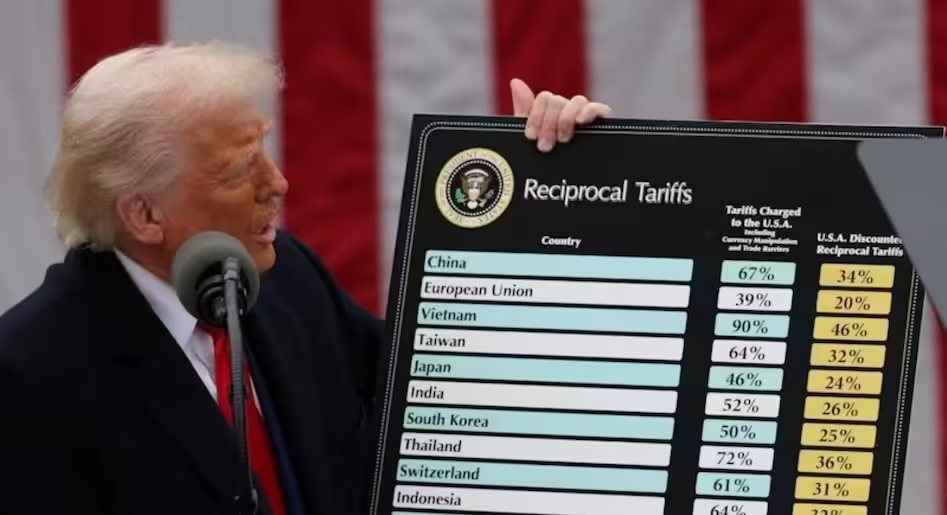Former President Donald Trump, a longtime supporter of high tariffs, appears set to double down on this economic stance if he secures a second term in office. For decades, Trump has advocated for insulating the American economy behind steep import taxes, a belief he’s held since the 1980s. And now, at 78, with the possibility of no re-election pressures ahead, he may finally implement it without restraint — even if it means economic discomfort for U.S. citizens.
Trump’s economic inner circle, including key adviser Stephen Miller, claims that tariff policies will spark a dramatic revival of American prosperity. However, the lived experience of many in countries that once endured such restrictions tells a different story — one of diminished access, reduced innovation, and growing frustration.
Learning from the Past
In countries like India, decades of heavy import duties transformed daily life. Basic consumer goods were often priced out of reach or entirely unavailable. As a child growing up in tariff-heavy India, it wasn’t until a trip to the UK that I even touched a Walkman. U.S. citizens may soon find themselves similarly deprived, with access to premium technology curtailed due to trade barriers.
Nintendo has already paused orders of the upcoming Switch 2 console for U.S. distributors, hinting at what might become a broader trend. If such policies escalate, American consumers could face long delays — or even total exclusion — from acquiring the latest electronics, fashion, and home products that remain widely available elsewhere.
Made in the USA — At a Cost
While one possible upside of tariff-driven policy is a boost in domestic manufacturing, history has shown that protectionism often leads to stagnant innovation. Without international competition, manufacturers may cut corners or inflate prices. The result? U.S.-made devices could end up with downgraded components and less functionality compared to their global counterparts.
“Made in the USA” risks becoming a symbol of compromise rather than excellence — a sentiment once familiar to Indian consumers during its protectionist era. Only when the country liberalized its economy did product quality and variety begin to meet global standards.
A New Era of Cross-Border Shopping?
In response to product shortages or higher domestic costs, U.S. citizens might look overseas for access. It could soon become normal for travelers returning from abroad to carry suitcases full of goods — not just as souvenirs, but out of necessity. Items like smartphones, gadgets, and even kitchenware might be more affordable in Canada or Europe than at home.
This could fuel a surge in cross-border retail — similar to how Canadians often saw an influx of American prescription drug buyers. The government might need new customs enforcement to limit unauthorized imports. Black markets and smuggling rings could flourish as profit margins for reselling foreign goods rise. It would be another security challenge for federal agencies like Homeland Security.
A Changing Image of the American Consumer
If this trajectory continues, the typical international shopper at high-end malls in Europe or Asia may no longer be from China — but from the United States. Much like in Sri Lanka, where duty-free shops offer everything from perfume to appliances, U.S. travelers may begin stocking up abroad out of economic necessity, not luxury.
It’s a lifestyle that fosters discontent and envy. Being disconnected from global supply chains is not a recipe for national revival — it’s a recipe for a frustrated populace that longs for better options and greater freedom.
The Risk of Forgetting What Worked
Historically, America’s strength wasn’t just military or economic — it was cultural. The widespread desire for American music, fashion, and gadgets helped win the Cold War. When Richard Nixon famously squared off with Soviet Premier Nikita Khrushchev in the 1959 “Kitchen Debate,” his winning argument was that the average American could already enjoy modern appliances — not just dream about them.
Trump’s tariff policies could mark a sharp reversal of that legacy. Instead of leading global consumer trends, the U.S. may find itself left behind — resentful, constrained, and searching for smuggled goods from abroad.
If America forgets the power of consumer choice and access to global quality, it risks more than economic strain — it risks its identity as the world’s most aspirational society.







